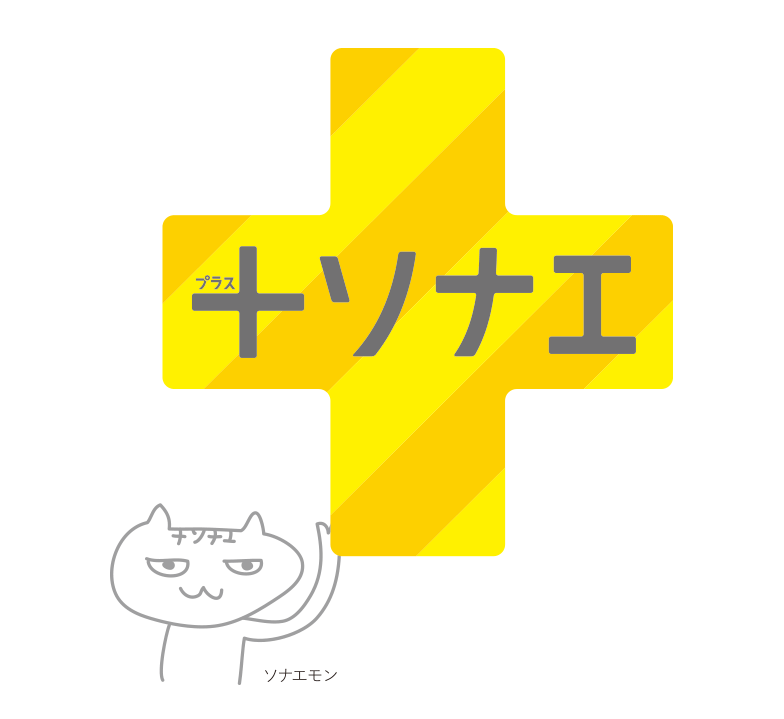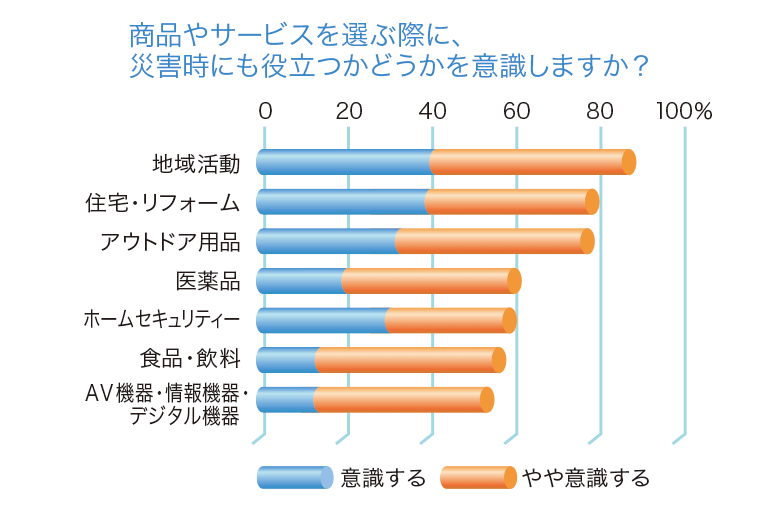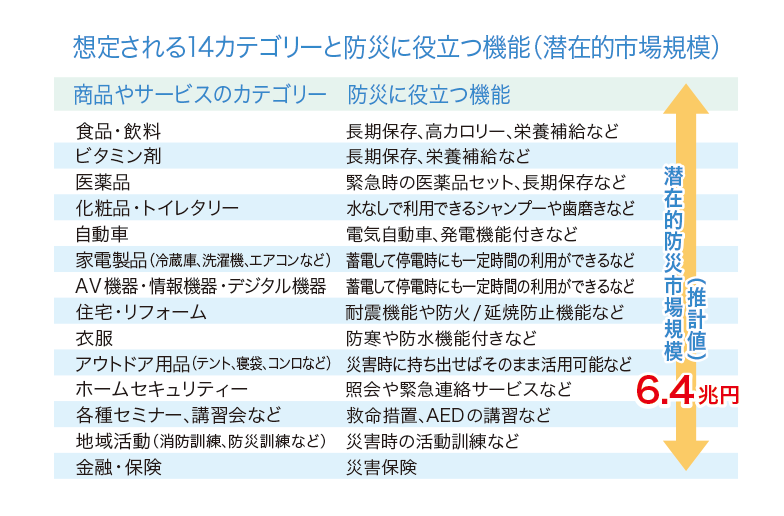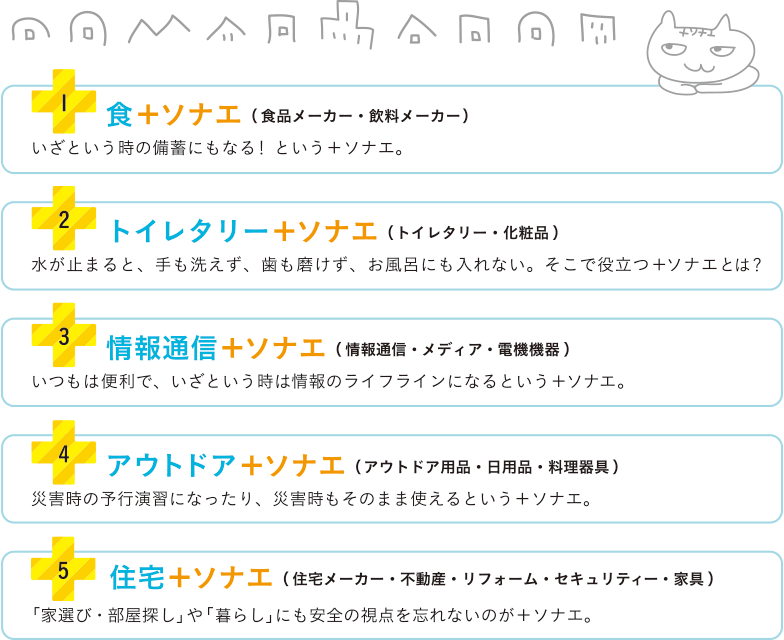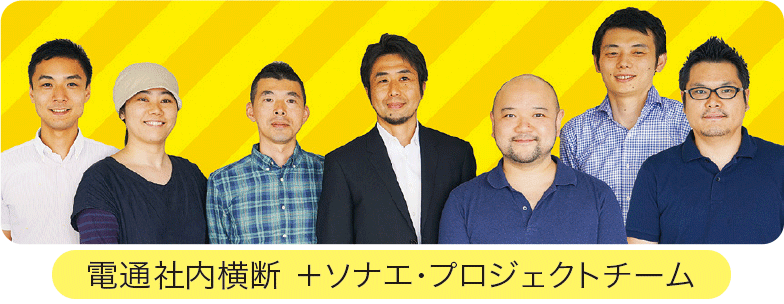New Disaster Preparedness, Starting Now
Natural disasters have been occurring with increasing frequency lately. While many people understand the need to prepare for emergencies, they often haven't taken action. Dentsu Inc. proposes a new perspective: "+ (Plus) Sonae" (Preparation Plus). This involves stopping the notion that disaster preparedness is "something special" and instead adding "peace of mind" through simple, effortless actions integrated into everyday life. This approach could also open up entirely new business opportunities.
The Potential of the Latent Disaster Preparedness Market
Environmental issues and ecology have evolved into themes that now broadly impact all aspects of life, including consumption, work, and daily living. Disaster preparedness, too, has the potential to transform into a theme encompassing lifestyle as a whole, moving beyond just conducting drills or stockpiling supplies.
Based on this thinking, DENTSU SOKEN INC. investigated the possibility that consumers might choose "broadly defined disaster preparedness products" by adding "disaster-useful functions" to a wide range of everyday goods and services.
*Survey conducted online in February 2015 with 400 men and women aged 20-60 living within a 30-kilometer radius of Tokyo.
*To calculate the potential market size, household expenditure amounts were referenced from the "Household Expenditure Survey" and "Household Consumption Survey," while the number of households was referenced from the National Census (Ministry of Internal Affairs and Communications).
Disaster Preparedness Lags Despite Anxiety
Regarding the Tokyo Metropolitan Area Direct-Hit Earthquake and the Nankai Trough Earthquake, 81.1% ("applies" + "somewhat applies," same below) reported "seeing or hearing reports in newspapers or on TV." 68.2% "understand the risks and feel anxious." In contrast, only 33.2% "are considering countermeasures," and 22.5% "are actually implementing specific countermeasures."
High interest in products useful for disaster preparedness
When presented with "disaster prevention features" across 14 categories and asked if they would consider such features when purchasing future products or services, 89.3% ("consider" + "somewhat consider," same below) cited "community activities," 80.4% cited "housing/renovations," and 79.3% cited "outdoor gear." "Medicine," "Home Security," "Food & Beverages," and "AV Equipment, Information Devices, Digital Devices" also exceeded 50%.
Want to know more about disaster prevention information
Regarding exposure to information about disaster prevention-related products and services, 74.0% ("applies" + "somewhat applies," same below) felt they "don't know enough information," 73.3% wanted "more information," and 79.2% wished "companies and local governments would provide more information."
Potential disaster prevention market size: ¥6.4 trillion
When estimating the potential disaster prevention market size across 14 categories closely related to disaster prevention, assuming sufficient information is provided to consumers and products with "disaster prevention-useful features" become available for purchase, the potential market size for broadly defined disaster prevention products and services was calculated at 6.4 trillion yen.
Adding peace of mind to everyday life!
"+Sonae" is a concept that aims to add the awareness of "preparedness" to everyday life from the consumer's perspective. From this viewpoint, we will create new added value for existing products, services, and businesses, and advance the development of new products, services, and businesses.
Adopting the +Sonae perspective can spark new sales approaches for everyday products and services across various industries, or even lead to entirely new products and services. For example...
+Sonae Project
Background of Launch
The 2014 Disaster Prevention White Paper introduced the concept of "the limits of public assistance." It further emphasized the importance of people-centered disaster prevention, stating: "To minimize damage during large-scale, wide-area disasters, it is essential to effectively utilize the 'soft power' of self-help and mutual aid within local communities."
However, at present, disaster preparedness among citizens and everyday residents—who are expected to be the main drivers of self-help and mutual aid—remains an ongoing challenge. Greater awareness and improved practical capabilities are urgently needed.


